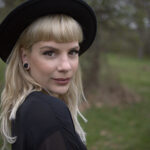Our class was so lucky to have a talk from the very knowledgeable and experienced Joanna Lake! She shared so many useful ideas on relationship/community building in the classroom, as well as using technology in the classroom.
Relationship/community building
- Mood scales: mood scales are fun images you can show the class with a particular animal having many different “moods” or facial expressions. You can have everyone in the class share which mood they feel like on a given day. Its a great way to do a morning check in, and can even be a fun way to take attendance. For example, when you call each students name, you can have them share which one they are feeling like that morning. A benefit of this method is that, because all of the moods are numbered, students can answer in a verbal or non-verbal way (they can hold up fingers to answer non-verbally, for example). Another benefit is that you can even link the mood scale to the curriculum; studying medieval times? Which medieval art owl do your students feel like today?
- Class-created bulletin board: this is a bulletin in the school or in the classroom in which each student writes something that brings them joy. Its a great reminder each day that they can look at and think about the little things that make them smile in life. Students can write and/or draw as an alternative if they want, too. This is another great way to build relationships in the classroom as it enables everyone to learn about what makes their peers or their students happy, what they enjoy.
- Have a routine every morning: starting your morning out with a fun routine is good for students because it gives them a sense of calm having predictability and stability each morning. Some suggestions for a fun morning routine Joanna shared were the following: joke of the day, watching a short video, doing a “would you rather question,” or listening to a class playlist (each student can pick their favorite song or two to put on the playlist).
- Class survey: getting to know your students by figuring out how they learn best is a way to relationship build which is also conducive to creating an effective learning environment. This is easy to do by conducting a simple survey. You can ask questions such as “how do you learn best,” or “what kind of classroom environment is most conducive to effective learning for you?” Ultimately, there will be different needs amongst your students, and you have to try your best to make things work for you and your whole class.
- Visual calendars: I used to use this for my preschoolers and I can say that these are very effective. All it entails is having a schedule for the day using pictures to show the activities. Who doesn’t appreciate knowing the series of events that will unfold throughout their day? I know I appreciate knowing the plan for my day ahead of time. Joanna recommends spending five minutes at the beginning of each day to give a quick run-through of your visual calendar.
- Let students get to know you: of course, if you are relationship building and trying to get to know your students, that should be reciprocated – they want to know you, too! Getting to know someone allows us to build respect and trust, and we learn more easily from those who we respect and trust. Tell the students about your interests, have them guess your age, where you have been, what pets you might have, share photos of you (especially a photo of you when you were there age)! A classmate of mine, Kelly, built on this and said that she recommends bringing a bag with three items that represent you/your interests. Students will love getting a sense of who you are as soon as possible. Given that our first week is observations with no teaching, we need to use this time wisely by getting to know the kids!
Joanna shared so many ideas for relationship building. Other ideas she had were having students write things on the board or vote for things on the board (start with low-risk questions and work your way up), “feel good Fridays,” tea parties, class Olympics, and using memes for teaching (particularly in middle school). Ultimately, she reminded us that sometimes students just need time to connect with eachother.
The Use of Flipgrid
I had never heard of Flipgrid before this talk from Joanna, but I am so glad to know about it now! It is an app (and website) where students can make videos, which is a great way to learn and for teachers to assess their learning. Having students make videos is beneficial in so many ways. Its fun, creative, and gives them experience using technology. Its also a great alternative to providing evidence of learning for students who struggle with reading and/or writing. Finally, it can also boost students’ confidence. Joanna shared a story of a shy girl in her class who made a really awesome and funny video. The girl ended up sharing her video to her class, and then shortly after ended up signing up for the school talent show!





